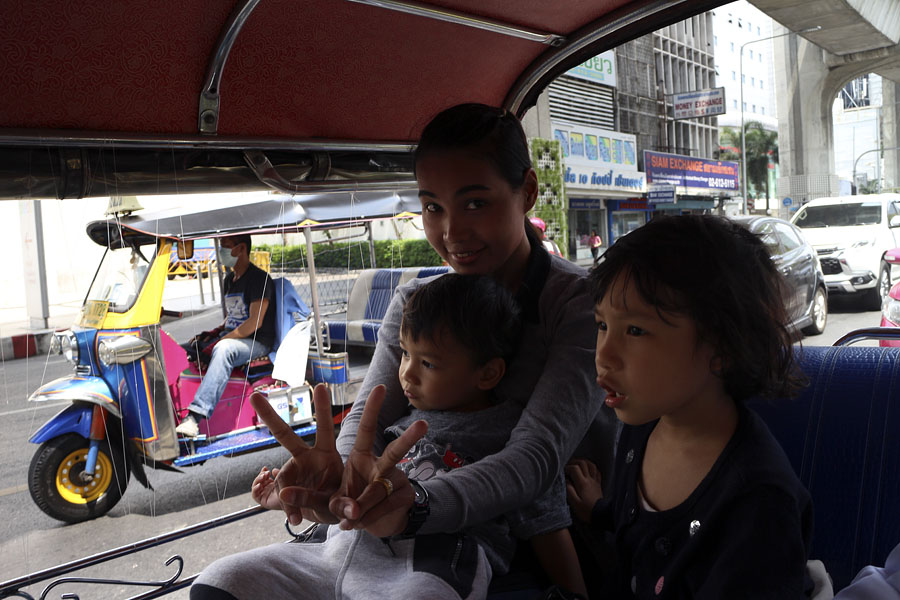Canon 90EX Speedlite Flash Review
Video Review
You can watch my video review of this flash unit on YouTube at the following link:
Canon 90EX Speedlite Flash Overview

Sample Images
A selection of photos taken with my Canon 90EX flash.
Clicking on the thumbnail images will open a larger image in a pop-up window
Lens: Canon EF-M 18-55mm f/3.5-5.6 STM IS
ISO: 400
Aperture: f/5.6
Shutter speed: 1/80
Exposure Program: Auto
Focal length: 55mm
EC +/-: 0
Monopod/Tripod: No
Flash: Canon 90EX
Extender: No
Location: Phattalung, Thailand
File Size: 182 KB
Lens: Canon EF-M 18-55mm f/3.5-5.6 STM IS
ISO: 400
Aperture: f/5.6
Shutter speed: 1/125
Exposure Program: Auto
Focal length: 45mm
EC +/-: 0
Monopod/Tripod: No
Flash: Canon 90EX
Extender: No
Location: Hat Yai, Thailand
File Size: 145 KB
Lens: Canon EF-M 22mm f/2 STM
ISO: 400
Aperture: f/7.1
Shutter speed: 1/200
Exposure Program: Manual
Focal length: 22mm
EC +/-: 0
Monopod/Tripod: No
Flash: Canon 90EX
Extender: No
Location: Nakhon Sri Thammarat, Thailand
File Size: 113 KB
Lens: Canon EF-M 18-55mm f/3.5-5.6 STM IS
ISO: 400
Aperture: f/9.0
Shutter speed: 1/100
Exposure Program: Manual
Focal length: 55mm
EC +/-: -1.33
Monopod/Tripod: No
Flash: Canon 90EX
Extender: No
Location: Nakhon Sri Thammarat, Thailand
File Size: 125 KB
Overview
This must be the most basic flash unit that Canon has ever produced. It's the dedicated Speedlite for the EOS M system, which has no pop-up flash, and the design brief must have been to make it as small and light as possible to complement the reduced size and weight of the EOS M body and EF-M lenses.
Dimensions: Width - 44.2mm (1.7"), Height - 52mm (2.0"), Depth - 65mm (2.6")
Weight: 50g (1.8oz) excluding batteries
The flash head cannot be tilted for bounce flash, there is no LCD, no flash head zooming, no high speed sync, and only one custom function.
There is a lot that it doesn't have, but it does a reasonable job within its limitations and it is so small and light that it can be carried around all day without even noticing that you have it.
Power comes from two AAA batteries that are available everywhere and there is a push button switch to turn the unit on and off. A green LED in the middle of the on/off button indicates when the unit is switched on and a red LED on top of the flash indicates that the flash is charged and ready to be fired.
If the batteries are new the 90EX charges very quickly after being turned on and Canon claim a recycling time of between 0.1 and 5.5 seconds between flashes. This will depend on the type of batteries, how much power remains in the batteries, and how much flash power was used on the previous flash as controlled by the E-TTL system.
With new batteries Canon claims a flash count of approximately 100 or more. Again, this depends on the type of batteries and how much power is used for each flash. I use Eneloop batteries and although I haven't done any testing to verify Canon's claim, I don't dispute it. I don't use the flash very much and I also carry a couple of spare Eneloop AAA batteries, just in case.
The flash coverage matches 24mm on a full-frame camera or 15mm on a 1.6x crop camera. I have used it with my Canon EF-M 11-22mm lens at 11mm and the light fall-off at the sides is acceptable.
The effective flash range with the Canon EF-M 22mm f/2 lens at ISO 100 is 1m to 4.5m. At ISO 12800 this increases to 4.5m to 50.9m.
That's about it. There is also a locking lever to lock the flash to the hotshoe.
Fill Flash
New photographers with little experience might think that a flash unit is only for use in dark conditions whereas I probably find more use for a flash unit in very bright conditions.
The following photo was taken in Bangkok on an intensely hot April day. April is the hottest month of the year in Thailand and the sun was very bright. I didn't use the flash unit and because of the very bright background the camera has underexposed the passengers inside the tuk-tuk.

Photo taken without flash
ISO: 100 | Aperture: f/5.6 | Shutter Speed: 1/100 | Flash: No
Still without using flash, I could have used a manual exposure or locked the exposure in order to get the right exposure for the occupants of the tuk-tuk but this would have resulted in the background being overexposed to the point that it would probably have been completely blown out. That wasn't what I wanted.
Instead, I simply attached the Canon 90EX and took the photo again. I left the camera on the P setting in Auto ISO mode so that the camera would work out the exposure without me having to do anything.
One slightly annoying thing it does when you do this is to change to ISO 400, when it probably isn't necessary. However, the sensor in the EOS M is pretty good and there isn't much noise at ISO 400.
The camera makes sure that the background is still properly exposed by selecting a suitable aperture and shutter speed, and controls the output of the flash unit to expose the main subject. The idea is to balance the foreground and background so that both are properly exposed.
If anything, there is normally a tendency to overexpose the foreground subject when using fill flash and it is a good idea just to wind down the flash exposure compensation by a third of a stop or so. The main exposure compensation and flash exposure compensation settings can be controlled separately.
I forgot to do this, but it is something that can be fixed fairly easily in post-processing. Here is the photo using the 90EX so that you can compare the two. What do you think?

Photo taken using the Canon 90EX flash unit
ISO: 400 | Aperture: f/10.0 | Shutter Speed: 1/200 | Flash: Yes
The 90EX flash unit is small and sits in the bottom of the pouch that I use for my EOS M. It's small, weighs next to nothing, and is quick and easy to fit. I find it really useful, however, I have to admit that a built-in flash unit such as the one on the EOS M3 would be much more convenient.
The great thing about the Canon EF system is that it really is a system and any Canon flash unit can be attached to any Canon camera body. Canon crop body cameras already have built-in, pop-up flash units, but Canon full-frame camera bodies don't.
As I have illustrated above, a small flash unit for fill flash can be extremely useful at times and if you have a full frame body you may not want to carry around a large, dedicated flash all the time. If you own a 6D, 5D or 1DX and just want a small, light flash unit for occasional fill flash the Canon 90EX could be a good option for you.
Master/Slave Functionality
The 90EX cannot be used as a Slave unit, however, it can be used as a Master.
Master flash control is set through the EOS M menu system: External Speedlite Control - Flash Function Settings.
Wireless transmission can be set to off or on. If set to on, all channels can be selected or any channel from 1 to 4 can be selected individually to prevent interference with other wireless flash systems that may be close by.
In Master mode the 90EX will fire three groups of flashes - A,B,C. These can all be fired with the same output or different ratios can be selected, choosing between A:B or A: B + C.
The power ratios available are 8:1, 4:1, 2:1, 1:1, 1:2, 1:4, 1:8
Canon claim that the range for wireless flash is 7m indoors and 5m outdoors.
Auto Exposure Control
The 90EX uses E-TTL or E-TTL II depending on the camera body that it is mounted to. A convenient feature is being able to switch off E-TTL and to use Manual mode instead. In Manual mode the flash output level can be set to 1/64, 1/32, 1/16, 1/8, 1/4, 1/2, 1/1.
The pre-flash that is used with the Canon E-TTL system completely screws up the exposure if I am using an onboard or pop-up flash to trigger my studio lights. The E-TTL pre-flash triggers the studio lights before the shutter opens and then I get an extremely underexposed image.
Fortunately, E-TTL can be turned off via the Menu. In the first Menu screen (camera icon and one dot) there is an 'External Speedlite control' option. To set this the 90EX must be attached to the camera hotshoe and turned on. In 'Flash function settings' there is an option to turn E-TTL off.
Available Functions
The following functions can be set via the Menu:
Flash firing: Enable | Disable
E-TTL II meter: Evaluative | Average
Flash sync. speed in AV mode: AUTO | 1/200-1/60 sec auto | 1/200 sec (fixed)
Flash function settings:
- E-TTL II flash metering: ETTL | Manual
- Wireless: Off | On
- Zoom 24mm (this option remains greyed out and unchangeable regardless of which lens I attach)
- Shutter synchronization: First-curtain synchronisation | Second-curtain synchronisation
- Flash exposure compensation: -2 to +2
There is only one custom function:
Flash C.Fn setting: Auto power off: Enabled | Disabled
Wireless Flash
When used as a Master to control other Speedlites, the E-TTL and Wireless options must be enabled. During wireless operation the 90EX controls the slave flash(es), but does not fire as a flash itself. In this mode the 90EX AF-assist beam will not work.
As part of the Canon EOS system, other Speedlites will work on the EOS M and conversely the 90EX can be used on other Canon bodies. For those people looking for a cheap, convenient Master flash to control their off-camera Speedlites this could be a viable solution.
When you turn on the Wireless function via the 'Flash function settings' option in the Menu, you then see the various Wireless options. You can select one of four channels (1,2,3,4) so that your wireless flash system does not interfere with any other wireless flash systems that may be in the vicinity. All the devices in your system need to be set to the same channel.
The flashes that you use can all be set to the same output or you can divide them into two or three groups (A+B or A+B+C) and adjust the power output ratio. In two groups the ratio is simply A:B. In three groups the ratio is A:B/C. The ratio is set between A and B/C and additionally you can adjust the exposure compensation of group C, so effectively the output from all three groups can be set differently. Once you have divided the flashes into groups (you need to specify the group on each individual flash), you can then set the ratio on the 90EX. The A:B ratio options are - 8:1 4:1 2:1 1:1 1:2 1:4 1:8.
Curtain Synchronisation
Through the EOS menu, the 90EX can be set to use first or second curtain synchronisation.
Automatic Switch Off
My large Speedlites go into sleep mode when the flash hasn't been activated for a while, which is fine because this saves battery life, and they then wake up when I push the camera shutter half way.
The 90EX doesn't do this.
After five minutes of inactivity the unit switches itself off, as in 'Off' and not in sleep mode. To use the flash it is necessary to physically switch it on again.
Five minutes might seem like a long time if you are sitting at a desk waiting for the flash to switch off automatically, but in the real world it isn't very long.
If you have the camera ready waiting for a shot it is quite annoying to press the shutter, thinking that the flash is on, when it has switched itself off.
The only custom function available in the EOS M menu for the 90EX is to enable or disable the Auto Power Off setting. If it is enabled, the flash will turn off completely (not sleep) after five minutes.
If this custom function is disabled the 90EX will remain switched on all the time. This may be preferable, but this mode will also drain the batteries faster.
Conclusion
My life changed completely when my children arrived. Before that I could afford to haul around a large, heavy bag of gear with lots of functionality. However, I can't do that any more.
I need my camera system to be small, light and portable. It also needs to be capable of delivering high quality images. The EOS M body and EF-M lenses meet all my requirements.
There is no pop-up flash on the EOS M body and sometimes I need some fill flash. A flash needs to meet the same criteria, that is, it needs to be small, light and portable. The 90EX is perfect.
It's not the same as my 550EX or 430EX II, but they are big, bulky devices. The 90EX sits at the bottom of my camera pouch underneath the EOS body and whichever EF-M lens I attach. It's great.
Life is all about sacrifices. You can have anything, but you can't have everything. To me - during this current phase of my life - the portability of the EOS M system, including this 90EX flash, is just what I need. I also find it really handy when I'm at home doing studio-type work with off-camera flashes and need a small, light Master flash.
It will be different for other people and, quite probably, it will be different for me in the future. Only you can make the right decision.
Other Review Pages You May Be Interested In






